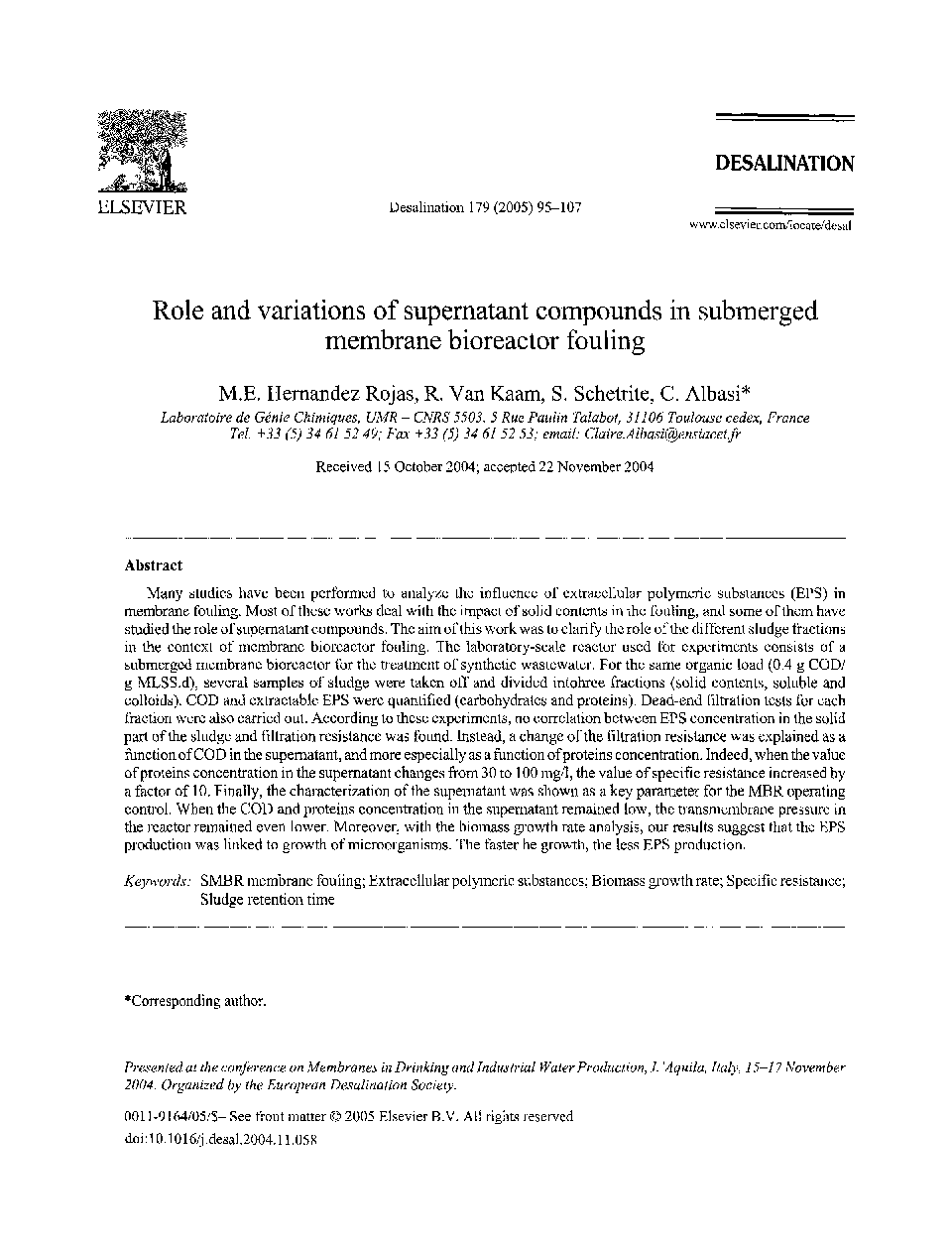| Article ID | Journal | Published Year | Pages | File Type |
|---|---|---|---|---|
| 9681094 | Desalination | 2005 | 13 Pages |
Abstract
Many studies have been performed to analyze the influence of extracellular polymeric substances (EPS) in membrane fouling. Most of these works deal with the impact of solid contents in the fouling, and some of them have studied the role of supernatant compounds. The aim of this work was to clarify the role of the different sludge fractions in the context of membrane bioreactor fouling. The laboratory-scale reactor used for experiments consists of a submerged membrane bioreactor for the treatment of synthetic wastewater. For the same organic load (0.4 g COD/g MLSS.d), several samples of sludge were taken off and divided intohree fractions (solid contents, soluble and colloids). COD and extractable EPS were quantified (carbohydrates and proteins). Dead-end filtration tests for each fraction were also carried out. According to these experiments, no correlation between EPS concentration in the solid part of the sludge and filtration resistance was found. Instead, a change of the filtration resistance was explained as a function of COD in the supernatant, and more especially as a function of proteins concentration. Indeed, when the value of proteins concentration in the supernatant changes from 30 to 100 mg/l, the value of specific resistance increased by a factor of 10. Finally, the characterization of the supernatant was shown as a key parameter for the MBR operating control. When the COD and proteins concentration in the supernatant remained low, the transmembrane pressure in the reactor remained even lower. Moreover, with the biomass growth rate analysis, our results suggest that the EPS production was linked to growth of microorganisms. The faster he growth, the less EPS production.
Related Topics
Physical Sciences and Engineering
Chemical Engineering
Filtration and Separation
Authors
M.E. Hernandez Rojas, R. Van Kaam, S. Schetrite, C. Albasi,
